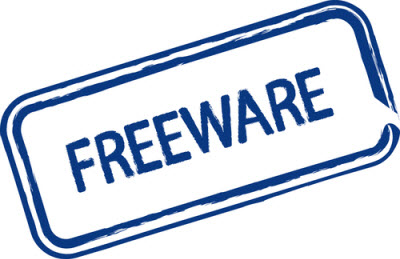You will no doubt be aware of the saying… “You can’t please all of the people all of the time“. What follows is in response to a couple of mild rebukes I have received regarding my freeware reviews. A couple of DCT readers have very politely suggested that a “proper” review should also include ratings for the software in question. You know, the type of ratings which are universally utilized by a majority of software reviewers… 4 out of 5 stars, 3 out of 5 stars, etc, etc. There are a couple of very good reasons why I never have, and never will, utilize such a system…
- The huge disparity between users’ proficiency levels and corresponding wants and needs.
- The similar disparity between different user machines and hardware specs.
Less experienced users, for example, are generally looking for a particular functionality, the inclusion of a plethora of extra features and options is not only most likely beyond their wants and needs, it also often only serves to confuse… simple is good! On the other hand, advanced users will generally be seeking those additional features and options… the more the better!
Tom is 70 years old, his main machine is an old Dell with Intel Pentium 4 cpu and 512MB RAM which he uses mainly for emailing and a little surfing. Tom wants a freeware which will do the job for him but won’t use up too much of his machine’s limited resources. On the other hand, Fred is 32, his main machine is a one year old custom-build with Intel Core i5 cpu and 8GB RAM. Fred uses his computer a lot and even thinks he knows a bit about how it works. Fred is looking for a freeware which will not only do the job for him but also make the morning coffee.
Tom is still on dial-up, with a seriously restrictive download limit. Tom is looking to avoid anything which requires a large download… smaller is better. Fred is on the fastest unlimited plan his ISP has to offer. Fred doesn’t give a hoot about file size… bigger is better, right?
I could go on and on but I’m guessing you’re getting the point. When it comes to software, there is rarely such a thing as one-shoe-fits-all. I’ve been writing about freeware for more than a decade, from back in the days when Clif Sipe and Ian (Gizmo) Richards ruled the freeware roost. I may not include any ratings but what I will do is:
- Let you know the download file size
- Do my level best to ensure that the software is 100% safe; scan the downloaded file for malware and check the website’s reputation/rating
- Install the software in a virtual environment to make sure there are no hidden (unwanted) extras or nasty surprises
- Describe the software to the best of my ability from firsthand experience.
- Explain to the best of my ability what features are present and which are not, ease of use, and any negative aspects I may encounter
- Let you know how the software appeals to me, personally
From there on in it’s up to the individual to decide whether the software might suit them or not. Or, in the case of comparatives, which particular software might best suit their individual needs. What I have never done, and never will do, is presume to tell you which software I think is best for YOU per medium of a rating system.
Cheers… Jim




Jim, as usual you have hit the nail exactly on the head. Your reviews and articles are “second to none” and always very well written. You are spot on mate!!!!!
Cheers mate… much appreciated.
Great to hear from you and to see you’re still around. 🙂
Hi Jim,
Thanks for all your helpful assistance for the varied levels of computer users abilities.
Cheers Jonno.
The definition of ‘FREEware’ is no longer what it used to be.
A new sub-category has aptly been labeled “FOISTware’.
This sub-category includes additional changes to an OperatingSystem, such as the addition of toolbars or modifications to other pre-existing/default settings of the system.
One good example (of FREEware versus FOISTware) is the difference between such utilities as PrivaZer versus CCleaner.: Latest versions of CCleaner adds a default toolbar to the user’ internet browser; whereas PrivaZer does not.
Nowadays, a user must use extra care (and pay special attention) to be aware that additional changes are not made during the installation process. Some of these additional changes (hence the name ‘FOISTware’) are designed to be subtle, and become the responsibility of the user to determine, if such unwanted changes are being made during the installation process.
Some years back there was an interesting twist to this issue with a free utility called WordWeb. Once every year or so, the utility would pop-up a prompt to ask the user how many flights they were on in the past year, and if the answer was more than 3, the WordWeb would prohibit the user from updating/installing the free version of the utility (due to excessive carbon footprint).
And this has what to do with the article exactly?
If you stick with DCT and our freeware reviews, you’ll soon discover that there is still plenty of genuine FREEware around.
BTW: WordWeb free is still around and still asking users if they have flown in a plane over the past 12 months.
All I can say Jim good reply to the never satisfied mob, I’ve never needed ratings.
Cheers.
Cheers Emlyn, appreciated.
I for one appreciate any of your offerings frolm low-tech to hi-tech.
The only improvement I would suggest is to state the version number to see whether or not this is an upgrade from what I may already have installed. Also, what OS will does it run on, would be helpful.
Happy trails!
Dan
Jim Hillier, you asked “And this has what to do with the article exactly?” to my post about “FOISTware”.
To connect the dots for you; it was my way of (in a less pointed manner than your reply) suggesting to you that 1)in future discussions of FREEware, a note of caution should be made about these add-ons that may be an integral part of some utilities 2)to make other readers know about these caveats and the terminology I have recently seen to describe such FOISTware, and 3)reference a 2 good utilities, while using them as examples.
After all, the title of your article was “Freeware Reviews: The do’s and don’ts”. And I just reviewed a few, and attempted to caution and provide a note about FOISTware.
I presume you are 110% correct about “You can’t please all of the people all of the time“.
I fully understood your meaning pseudoid, but you are suggesting something which I clearly stated I already do. What part of (and I quote verbatim from the article)… “What I will always do is – Do my level best to ensure that the software is 100% safe; scan the downloaded file for malware and check the website’s reputation/rating“… and… “Install the software in a virtual environment to make sure there are no hidden (unwanted) extras or nasty surprises… is not perfectly clear?
Obviously, if any unsavory elements are present, depending on the severity, I’ll either abandon the review altogether or include a warning to that effect. Why would I bother checking otherwise?
Well Jim, you certainly opened that can of worms topic, Freeware. Since I’m late in replying, I’ll wait for your next installment, when you list the software. Might I suggest you include a refresher of just exactly what Freeware means and how it distances itself from Freeware with ads and those who ask for contributions, etc…, Mindblower!
Hey MB – We could probably start a whole new discussion on what actually constitutes freeware. As far as I am concerned, if it is software which is free to download and use without limitations, then it is FREEware. It might not be good freeware, or desirable freeware, but freeware nonetheless.
Adware, donationware, foistware, etc are all derivative descriptions which indicate some additional element. What I always do prior to reviewing a product (as stated in the above article) is thoroughly check the freeware in question for any possible harmful or unwanted additions or bundling. In most cases, if any unsavory elements are present, I will not review or recommend the software…. end of story. Occasionally, if I believe the software is of the highest quality and the ads are not overly intrusive or aggressive, and any bundling is readily identifiable and avoidable, I will still publish a review. However, those reviews will ALWAYS include a warning by way of cautionary explanation.
And, if/when I come across a freeware which is really bad, I’ll publish an article dedicated to warning readers about it.
Cheers… Jim
Jim, I for one don’t understand how anyone who reads your reviews for free, can possibly complain about your reviews. You have exactly described how I look at freeware, specifically download size, simplicity of use, and does it do what I need to have done. You supply extremely valuable commentary about hidden things to be aware of, or possibly to not download it at all. I for one value whatever you have to say about any given freeware, and I use and have used your insight many times. I am delighted that you take the time to investigate, evaluate and comment on many freeware titles. Thanks for what you do for the internet community.
Thank you Ralph, much appreciated.